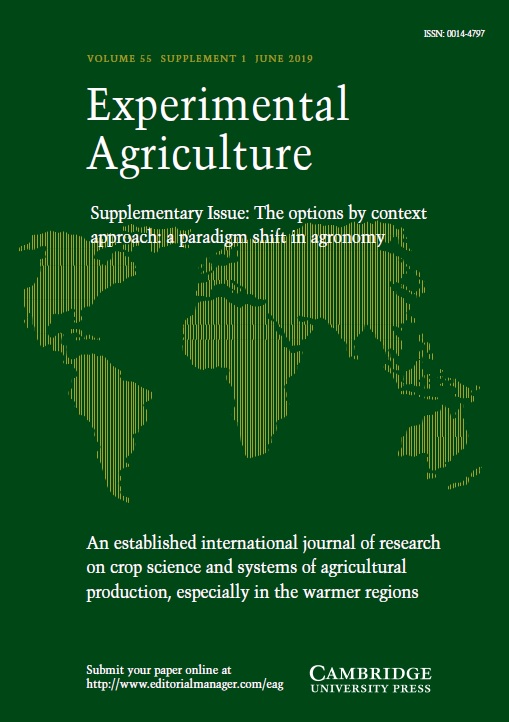Yield response of barley to the application of mineral fertilizers containing major nutrients on Cambisols and Vertisols in Ethiopia
Increasing barley production in the face of declining soil fertility on smallholder farms is a critical challenge in Ethiopia. The objectives of this study were to (1) determine the optimum rates of nitrogen (N), phosphorus (P), potassium (K), and sulfur (S) fertilizers under a balanced fertilization of other macro- and micronutrients (zinc and boron) and (2) quantify the agronomic efficiency of N and P on Cambisols and Vertisols. The trials were conducted for three consecutive years (2014–2016) on farmers’ fields on 83 sites under rain-fed conditions. On each farm, six rates of N, P, K, and S with a balanced application of the other nutrients were laid out separately in a randomized block design with three replicates. Balanced fertilization resulted in yield increments of 26–59% on Cambisols and 18–74% on Vertisols, as compared with the control (0 N). Application of P increased grain yield from 11% to 30% and from 7% to 14% due to the interaction of P by soil type as compared with the control. The application of K and S, however, had no significant effect on barley yields on either soil type. The highest agronomic efficiency of N (AEN) was obtained from 46 kg N ha−1, with AEN increasing by 117% on Cambisols and 33% on Vertisols, as compared with the highest N rate of 230 kg N ha−1. The maximum agronomic efficiency of P (AEP) was recorded with 10 kg P ha−1 on Vertisols, with AEP increasing by 73% on Cambisols and 452% on Vertisols, as compared with the application of 50 kg P ha−1. With balanced application of other nutrients, use of 230 kg N and 20 kg P ha−1 was recommended for tepid sub-moist mid-highlands and Vertisols. For tepid sub-humid mid-highlands, application of 46 kg N and 20 kg P ha−1 with balanced application of other nutrients was recommended. For Cambisols, application of 230 kg N and 40 kg P ha−1 was recommended with balanced application of the other nutrients. Similarly, application of 230 kg N, 40 kg P, and 10 kg S ha−1 was tentatively recommended for cool sub-most mid highlands. However, response to K was inconsistent and therefore a firm recommendation could not be proposed for the study sites. Further research needs to be conducted on more soil types and locations.

